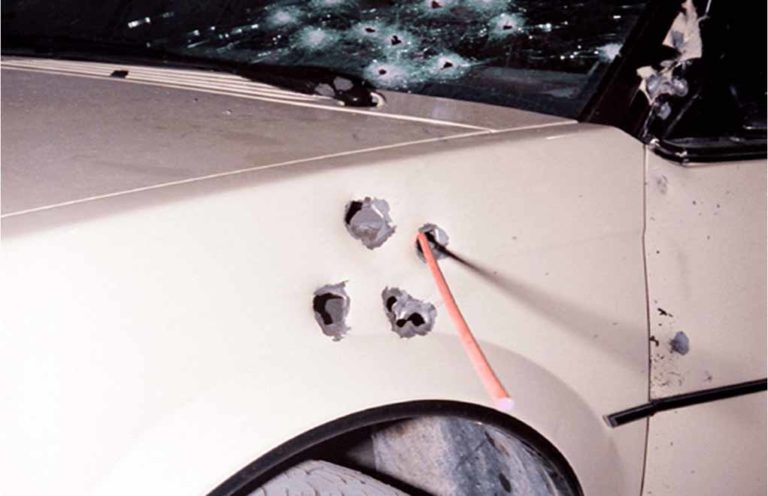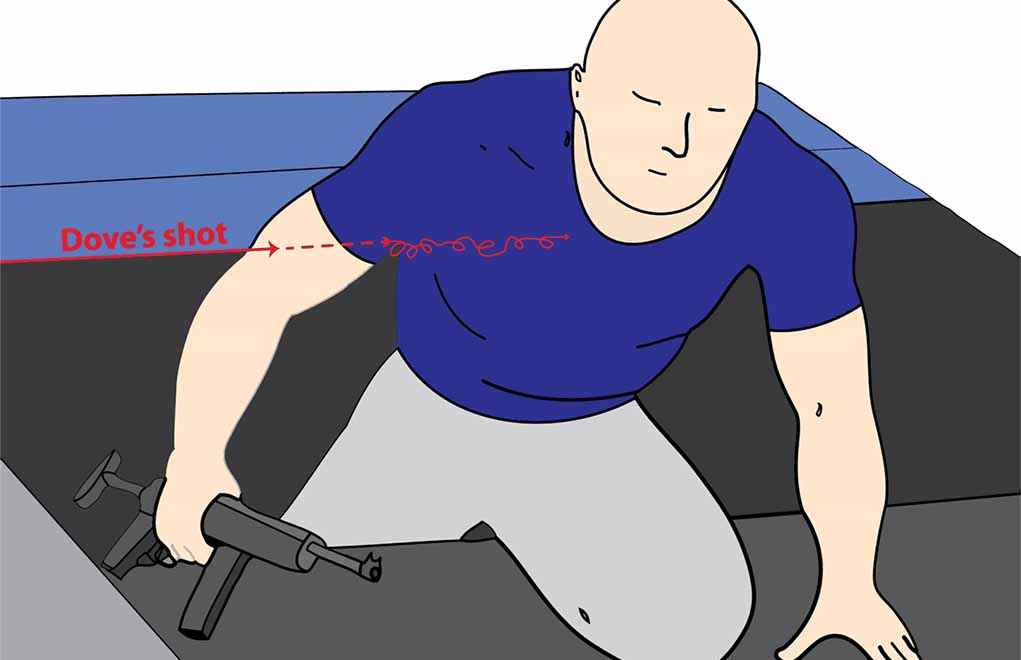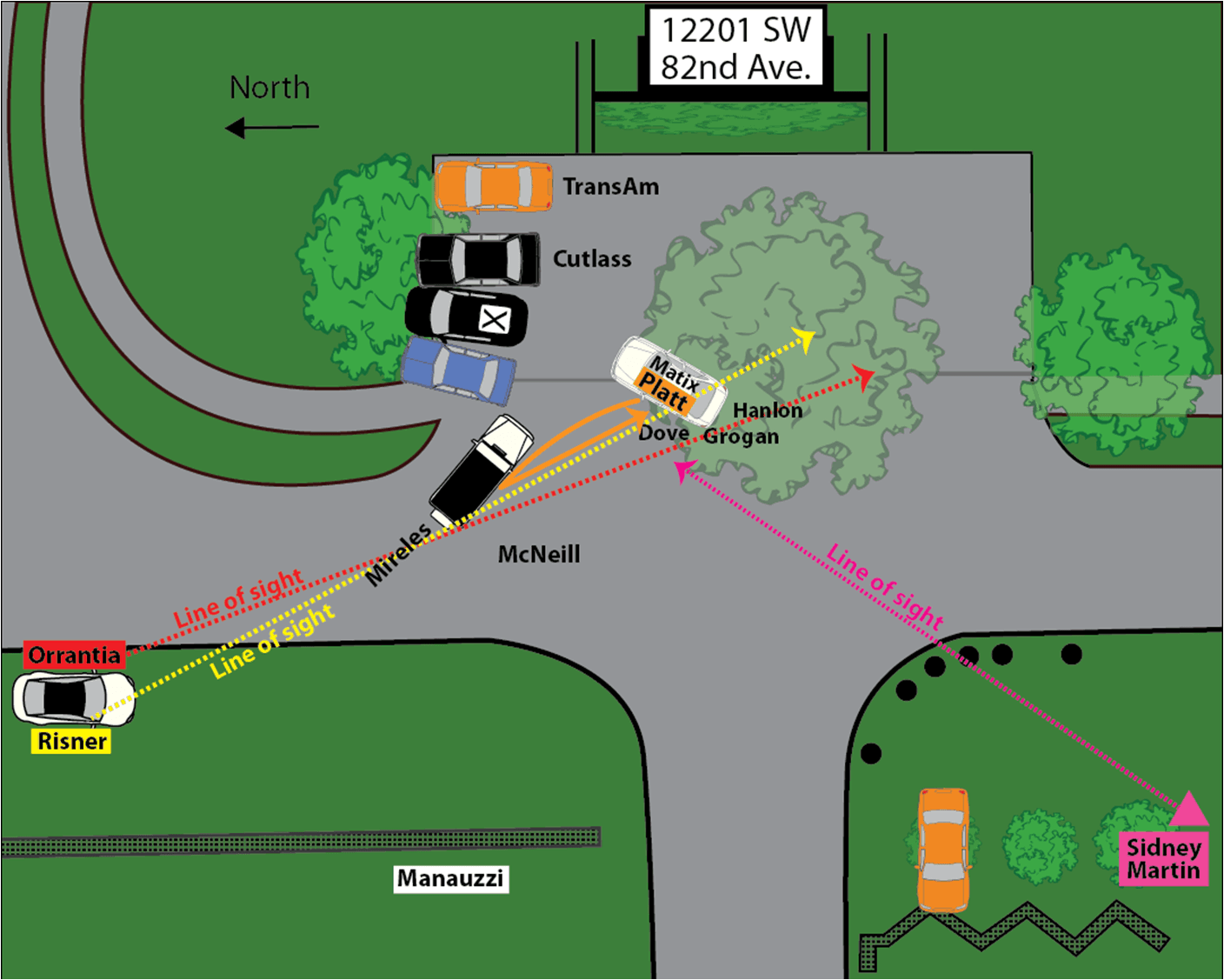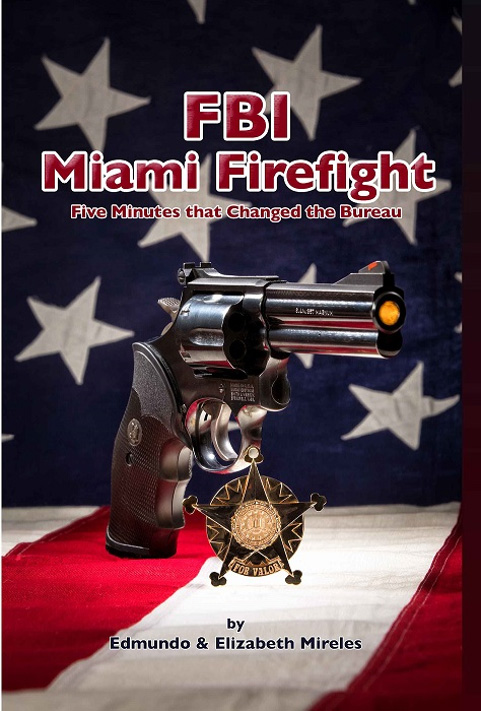
The infamous 1986 Miami Shootout forever changed law enforcement training, equipment and tactics.
Editor's Note: On April 11, 1986, in Miami, Florida, eight FBI agents and two bank robbers engaged in a five-minute gunfight. One-hundred and fifty shots were fired during the incident. In the end, two FBI agents and the bank robbers were dead, and nine out of the 10 participants were shot. Infamously known a the 1986 Miami Shootout forever changed law enforcement training, equipment and tactics throughout the United States. The man who stopped the end the bloody incident—Special Agent Edmundo Mireles—chronicled the events in his masterfully written book FBI Miami Firefight: Five Minutes that Changed the Bureau. What follows is an excerpt from Chapter 16 of the book, titled: Five Minutes that Changed the Bureau.
Later in 1988, the FBI hosted the “Wound Ballistics Seminar/Workshop.” Very early in the Miami gun battle, (Agent) Jerry Dove fired a bullet that stopped about two inches short of (bank robber Michael) Platt's heart. After this supposed “non-survivable” hit, Platt continued to fight and went on to kill Jerry. All other things aside, the Miami Shootout was an ammunition failure. The FTU (Firearms Training Unit) gathered national experts on wound ballistics: military experts, homicide investigators, and medical examiners. It was hoped that these experts could come to a consensus as to how best to stop a “human target.”
It was important to understand that Jerry’s shot happened before any of the agents were seriously wounded. Jerry’s shot went through Platt’s right arm, severing his brachial artery, moving up and into the left side of his chest, traversing through his right lung, and stopping about two inches from his heart. It is speculated that this hit would stop 90 to 98 percent of most people. However, this did not stop Platt. He kept fighting. The shooting ended with Platt killing two agents and wounding five agents. Both subjects died. The 90 percent casualty rate led to the Wound Ballistics Workshop and an ammunition study.

More On FBI Guns And Tactics:
- FBI Revolvers of the Past
- 10mm Handguns and the FBI
- FBI Sniper Rifles Through The Years
- FBI Firearms Past & Present
- The FBI And Thompson Submachine Gun
The group consensus was that, with the exception of a sniper using a rifle to make a “one shot, one kill” head shot or a spinal cord hit, it was difficult to stop a Human Target. The group consensus on handgun ammo was that “size” did matter. A larger handgun bullet caused larger wounds, which in turn generally led to rapid, faster bleeding. Rapid bleeding led to quicker incapacitation, either by passing out or death. This study dramatically altered the way law enforcement thought about handgun ammunition. However, this consensus caused its own problems. Large caliber handgun rounds were .357 magnum. .45, .44 magnum. Obviously these calibers required large frame weapons. Holding a large frame weapon requires large hands. Many small people don’t have large hands. Therein is the problem!
This led to another project that the FBI started to work on, which was the “ballistics” testing project. I had nothing to do with that project except observe. However, observing gives me partial credit for the research. Kind of like getting a trophy for being on a sports team even if you rode the bench. What the FTU did was prepare tests of 9mm, 10mm, .38, .357, .380, and .45 caliber bullets under reproducible conditions to see how they performed. Everything was documented for future reference so the tests could be reproduced by anyone with the equipment to validate the original findings. Ballistic gelatin, a testing medium scientifically correlated to simulate muscle tissue, was used in the testing. It provides a consistent and reliable testing material for ballistics testing.
The test events conducted were as follows:
Test 1: Bare gelatin at 10 feet, control test.
Test 2: Light clothing at 20 yards. (T-shirt, flannel shirt)
Test 3: Heavy clothing at 10 feet. (T-shirt, flannel shirt, 10 oz. down, cotton denim)
Test 4: Automotive sheet metal at 10 feet. (Two pieces of 20-gauge hot-rolled steel spaced 3” apart). This simulates the thinnest portion of an automobile door.
Test 5: Wallboard (drywall) at 10 feet. (Two pieces of standard 1/2” gypsum wallboard spaced 3-1/2” apart.) This simulates standard wall construction.
Test 6: Plywood at 10 feet. (One piece of 3/4” AA fir plywood.)
Test 7: Automobile glass at 10 feet. (Standard windshield glass mounted at a 45° angle.) Shooting was done from a 15° angle to simulate the position of an officer at the left front (driver’s side) of an automobile.
Test 8: Automobile glass at 20 yards. Same as Test No. 7, except the shot was fired from directly in front of the car.
While gelatin testing is commonplace, this was the first time that anyone had developed an objective methodology for the evaluation of law enforcement ammunition based upon real world shooting situations.
The tests using windshield glass and sheet metal were the most challenging. These tests eliminated the 9mm and .38 Special. If a law enforcement agency has a remote possibility of shooting around cars, it would be wiser to consider the heavier calibers.

The tests showed that kinetic (muzzle) energy isn’t a reliable predictor of bullet performance. Another issue was “hollow point” bullets. The study also proved something many law enforcement agencies have known: The expansion of hollow point bullets is unreliable. In the tests where hollow point bullets had to penetrate barriers like dry wall and plywood, expansion was rare. Shots through both wallboard and plywood showed that the hollow point was routinely plugged by material and the projectile performed as if it were a round nose (ball) bullet. Shooting through car doors and front windshield glass was telling. Most shots through windshield glass and car doors stripped out about 50 percent of the bullet weight as it passed through the barrier. If you fired a bullet weighing 150 grains, what came out the other end was a bullet weighing 75 grains or less. It has been a long time since I retired, so maybe bullet manufactures have improved their rounds to surpass the original test results.
Keeping in mind that the Wound Ballistics Workshop concluded that size does matter, and the ballistics testing demonstrated that shooting through barriers affects bullet performance, the FTU selected the .40 caliber round as the optimum service round to be carried by FBI agents. The FTU also had to take into consideration employees with small hands, so there had to be a balance between caliber and the size of the pistol frame. In the real world “one size does not fit all,” but the FBI tried to accommodate the largest percentage of the agent population without having to buy and fit each agent with a personal pistol. That cost would have been prohibitive. The Smith & Wesson gun company eventually produced a .40 caliber bullet for law enforcement and civilian use. Over the years, the Bureau went through several different gun manufacturers assessing which gun platform best served the FBI’s needs. However, the .40 round is still in use today.
To repeat, bullet size does matter when trying to stop a large land mammal like a human being. That is why the FBI’s ballistic testing was so cutting edge and important for law enforcement across the country. In that regard, rifles are better than handguns because rifles fire larger caliber rounds at higher velocity. As my old USMC drill sergeant use to say, “Getting hit by a rifle bullet will fuck up your health record!” Case in point was me: The rifle bullet that hit my left arm “fucked up my health record” and temporarily took me out of the fight.

Another lesson tied to the wound ballistics and caliber debate was the “bullet capacity” of law enforcement handguns. A revolver normally carries six bullets. Semi-automatic pistols at that time could carry anywhere from eight to fifteen bullets. A person with a revolver has to reload after shooting six times. A person with a fifteen-shot pistol can keep shooting while the revolver has to be reloaded. (Agents) Gordon (McNeill) and Jake (Hanlon) both stated that they felt the most vulnerable when they ran out of ammo and had to reload. They had to take their eyes off the threat and look at their weapon to reload. A person with fifteen-round magazines can keep fighting. Replacing a magazine is easier and faster than reloading a revolver. This led the FBI transition from revolvers to high capacity pistols.
The FBI Training Division at Quantico reviewed the Firearms Training Unit (FTU) curriculum, and the FTU started to add more “combat” shooting courses: Moving and shooting, shooting one-handed, reloading one-handed, shooting with your weak hand, shooting at moving targets, shooting from cars, and shooting at smaller targets. It added a more realistic style of training as opposed to shooting in straight lines at stationary targets. There was also an increase in car stop training.
The FBI also procured more shotguns and semi-auto 9mm MP-5 submachine guns with thirty-round magazines. The numbers meant that every two agents would have a shotgun or MP-5 with them in case they needed more firepower. The FBI also authorized agents to purchase their own assault rifles for use on duty. The stipulations were that the assault rifles had to be consistent with the FBI’s current issued weapons, which was the Colt M-16 platform. Regular FBI agents (non-SWAT trained) could only purchase semi-automatic assault rifles, had to register their weapon with the FBI, and had to qualify with their weapons a minimum of once a year.
The FBI also researched, designed, and procured “gun racks” for all these new long weapons. If you look at a standard marked police car, you may see a shotgun rack in between the front seats of the car. It is placed there for faster accessibility. FBI cars are not marked, so you can’t have a shotgun racked in the front seat area without drawing attention to the car. Plus this would mark the car as a target for a break-in to take the weapon. The FBI designed a gun rack that was secure and out of sight yet still accessible to the agents in the front seat.

Get Your Copy of FBI Miami Firefight: Five Minutes that Changed the Bureau at GunDigestStore.com.

Next Step: Get your FREE Printable Target Pack
Enhance your shooting precision with our 62 MOA Targets, perfect for rifles and handguns. Crafted in collaboration with Storm Tactical for accuracy and versatility.
Subscribe to the Gun Digest email newsletter and get your downloadable target pack sent straight to your inbox. Stay updated with the latest firearms info in the industry.

![Best Concealed Carry Guns In 2025 [Field Tested] Wilson Combat EDC X9S 1](https://gundigest.com/wp-content/uploads/Wilson-Combat-EDC-X9S-1-324x160.jpg)


![Best 9mm Carbine: Affordable PCCs [Tested] Ruger Carbine Shooting](https://gundigest.com/wp-content/uploads/Ruger-Carbine-Shooting-100x70.jpg)
![Best AR-15: Top Options Available Today [Field Tested] Harrington and Richardson PSA XM177E2 feature](https://gundigest.com/wp-content/uploads/Harrington-and-Richardson-PSA-XM177E2-feature-100x70.jpg)

I really would like to see some data on how much more effective hollow points are compared to round nose solid projectiles. Anecdotal evidence from police departments shows incapacitation is noticeably better with expanding ammunition but how much better is it compared to solids?
What a pivotal event. A LOT of new guns, ammunition, and training were purchased as the result of this very, very, very real and tragic incident. It happened on April 11th and involved 8 FBI agents. There was a TV movie of the week that showed exactly how it happened, so you better believe that’s what happened.